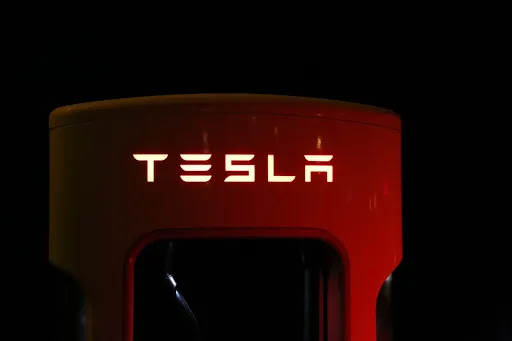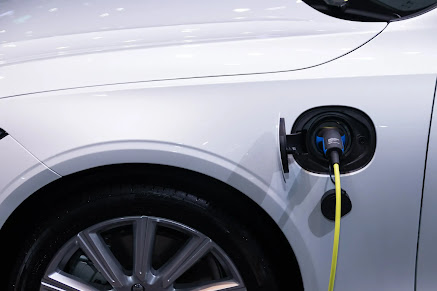
The automotive industry has undergone a profound transformation in recent years, driven by technological advancements and a growing awareness of environmental sustainability. One of the pivotal shifts within this landscape is the rise of electric cars as a viable alternative to traditional petrol-powered vehicles.
This comprehensive exploration delves into the fundamental differences between electric and petrol cars, examining their power sources, environmental impact, infrastructure, performance, and the broader implications for the future of transportation.
1. Power Source:
Electric Cars: Often hailed as the future of mobility, are powered by electric motors. These motors draw their energy from rechargeable batteries, which store electricity for later use. Unlike their petrol counterparts, electric cars produce zero tailpipe emissions during operation. The transition to electric power represents a significant departure from the century-old reliance on internal combustion engines.

Petrol Cars: On the other hand, petrol cars, also known as gasoline cars, rely on internal combustion engines. These engines combust petrol or gasoline, converting the chemical energy in the fuel into mechanical energy to propel the vehicle forward. The combustion process emits carbon dioxide (CO2) and other pollutants, contributing to environmental concerns such as air pollution and climate change.
2. Environmental Impact:
Electric Cars: Electric cars are often lauded for their eco-friendly credentials. When powered by electricity generated from renewable sources, such as solar or wind, they can have a minimal carbon footprint. The absence of tailpipe emissions makes electric vehicles an attractive option for environmentally conscious consumers looking to reduce their impact on local air quality.

Petrol Cars: Petrol cars, in contrast, emit pollutants such as CO2, nitrogen oxides (NOx), and particulate matter during combustion. These emissions contribute to air pollution, smog formation, and adverse health effects. The environmental impact of petrol cars is a driving force behind the global push toward cleaner and more sustainable transportation alternatives.
3. Fueling Infrastructure:
Electric Cars: The infrastructure for electric vehicles (EVs) is expanding globally, with an increasing number of charging stations available in urban centers and along highways. Home charging solutions, such as wall-mounted chargers, allow EV owners to conveniently recharge their vehicles overnight. However, the availability of charging stations may vary regionally, and further expansion is necessary for widespread adoption.

Petrol Cars: Petrol cars benefit from an extensive network of petrol stations, offering quick and convenient refueling options. The prevalence of petrol stations is a legacy of the traditional automotive era, providing drivers with easy access to fuel in most regions. The established infrastructure is one of the reasons why petrol cars continue to dominate the roads.
4. Range and Charging Time:
Electric Cars: Electric cars' range depends on the battery capacity and the efficiency of the vehicle. While advancements in battery technology have increased the range of many electric models, concerns about range anxiety persist. Fast-charging stations, capable of providing a significant charge in a short time, alleviate some of these concerns.

Petrol Cars: Typically have a longer range per tank of fuel compared to electric cars. Furthermore, refueling at petrol stations is a quick process, taking only a few minutes. The convenience of a longer range and fast refueling remains a competitive advantage for petrol cars.
5. Maintenance:
Electric Cars: Often have fewer moving parts in their powertrains compared to petrol cars. With fewer components prone to wear and tear, electric cars can potentially incur lower maintenance costs over the long term. Notably, electric vehicles do not require traditional engine maintenance, such as oil changes.

Petrol Cars: With their internal combustion engines, involve more intricate mechanisms that require regular maintenance. Common maintenance tasks for petrol cars include oil changes, air filter replacements, and exhaust system repairs. The higher number of moving parts can contribute to increased maintenance costs.
6. Performance:
Electric Cars: Electric cars are celebrated for their instant torque delivery and smooth acceleration. The absence of a traditional gearbox contributes to a seamless and quiet driving experience. The performance characteristics of electric cars make them well-suited for urban commuting and highway driving.

Petrol Cars: Offer a diverse range of driving experiences, depending on the type of engine (e.g., naturally aspirated, turbocharged). The characteristic engine sound, responsiveness, and acceleration vary among petrol-powered vehicles. Enthusiasts often appreciate the unique feel of a petrol engine.
7. Purchase Price and Incentives:
Electric Cars: The initial purchase price of electric cars can be higher than that of petrol cars, primarily due to the cost of the battery. However, government incentives, tax credits, and rebates aim to offset this initial expense, making electric vehicles more financially accessible. Additionally, the lower operating costs over time can contribute to cost savings.

Petrol Cars: Petrol cars typically have a lower upfront cost compared to electric cars. However, ongoing expenses related to fuel and maintenance should be factored into the total cost of ownership. The availability of affordable petrol cars makes them an attractive option for budget-conscious consumers.
The ongoing shift toward electric vehicles reflects a broader societal movement toward cleaner and more sustainable transportation. While electric cars offer environmental benefits and innovative technologies, petrol cars maintain a stronghold on the roads, benefiting from established infrastructure and familiarity. As technology continues to advance and global efforts to combat climate change intensify, the automotive landscape will likely witness further transformations, ultimately determining the future trajectory of personal mobility. Whether powered by electrons or traditional fuels, the journey toward sustainable transportation is a dynamic and evolving narrative.











0 Comments